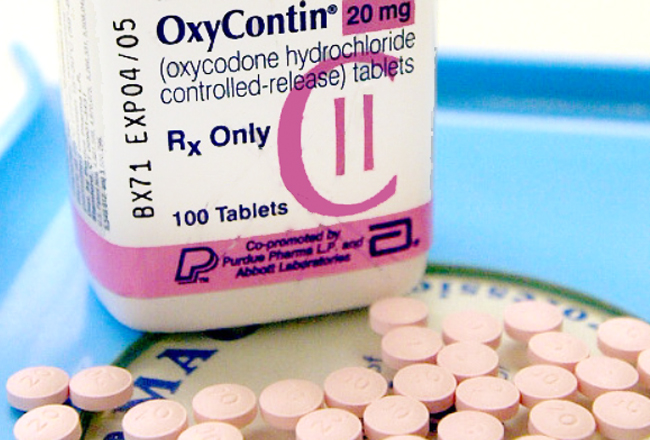Purdue Pharma files for bankruptcy as part of settlement; CT, NY plan to fight on
As expected, OxyContin maker Purdue Pharma filed for bankruptcy in White Plains on Sunday night, part of a strategy to protect the Stamford company and its owners from the 2,000-plus federal, state and municipal lawsuits filed against it.
The bankruptcy hearing is expected to begin as early as this week.
The filing follows a tentative settlement with many of the state and local governments suing Purdue over its opioid marketing practices. That settlement ”“ which includes additional money from members of the Sackler family, who own the majority of the company ”“ is valued at $10 billion to $12 billion.
 While hundreds of cities, 24 states and five U.S. territories have accepted the agreement, 26 states ”“ including Connecticut and New York ”“ have not.
While hundreds of cities, 24 states and five U.S. territories have accepted the agreement, 26 states ”“ including Connecticut and New York ”“ have not.
On Friday, New York Attorney General Letitia James filed new evidence showing the Sackler family had taken at least $1 billion from the company in previously unknown withdrawals through Swiss bank accounts.
Other court filings maintain that members of the Sackler family were paid more than $4 billion by Purdue Pharma from 2007 to 2018. Much of the family”™s fortune is believed to be held outside the U.S., which could further complicate the lawsuits filed in the U.S.
“This move was expected and we are prepared,” Connecticut Attorney General William Tong said. “Whether through bankruptcy or Connecticut courts, we will hold Purdue and the Sacklers accountable for the pain and suffering and death they have caused here and across the country.
“They have had opportunity after opportunity to do the right thing and begin to make amends for the damage they have done,” he continued, “yet time after time they choose greed.
“Purdue and the Sacklers cannot cry poverty while stashing billions overseas,” Tong said. “We will move aggressively in bankruptcy to disclose their hidden fortune and ensure their full wealth is now on the table. And at every turn, we will fight their craven strategy to use bankruptcy to shield their wealth and to evade our claims to secure billions of dollars for addiction science, treatment and recovery.”
Throughout the saga, Purdue Pharma and the Sacklers have refused to admit any wrongdoing.
“This unique framework for a comprehensive resolution will dedicate all of the assets and resources of Purdue for the benefit of the American public,” Steve Miller, chairman of Purdue”™s board of directors, said in a statement. “This settlement framework avoids wasting hundreds of millions of dollars and years on protracted litigation, and instead will provide billions of dollars and critical resources to communities across the country trying to cope with the opioid crisis. We will continue to work with state attorneys general and other plaintiff representatives to finalize and implement this agreement as quickly as possible.”
Members of the Sackler family have agreed to pay at least $3 billion in the settlement and to cede control of Purdue, which would be restructured to allow its future profits to go to the company”™s creditors.
In a statement, the families of late company owners Mortimer and Raymond Sackler said they have “deep compassion for the victims of the opioid crisis” and believe the settlement “is an historic step toward providing critical resources that address a tragic public health situation.”
Since OxyContin was introduced in 1996, addiction and overdoses have risen sharply. In both 2017 and 2018, opioids were involved in more than 47,000 deaths, according to the U.S. Centers for Disease Control and Prevention.
The federal bankruptcy judge must decide whether the objections by the 26 states are enough to negate the deal; whether those states should be bound to the deal; the order in which the complainants will be paid; and the respective amounts due to each of those complainants.